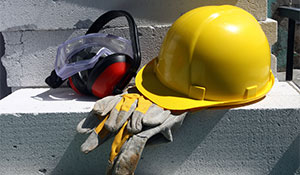In the workplace, ensuring personal safety is crucial. However, accidents cannot always be avoided. Are you prepared for the possibility of someone getting injured? Read on to discover what steps to take in the event of an accident.
Workplace Injuries
The latest statistics for 2022/2023 reveal that 135 workers lost their lives due to workplace accidents (source: RIDDOR), and approximately 561,000 workers sustained non-fatal injuries at work (source: Labour Force Survey). About 124,000 of these non-fatal injuries resulted in a 7-day absence from work.
However, not all these accidents are reported. In fact, employers often underreport non-fatal injuries by approximately 50%. Only 60,645 reports of non-fatal injuries were filed. Common injuries include lifting, handling, or carrying (20%), slipping over (19%), and being struck by a moving object (10%). It is estimated that 4.5 million working days were lost due to workplace injuries, with an average of 7.2 days of absence per person (source: Labour Force Survey).
What to Do When an Injury Occurs?
If someone gets injured, employers should follow the correct procedures, as they are responsible for their employees’ well-being in case of a workplace accident, regardless of its severity.
The employer should handle all accidents fairly while adhering to the health and safety guidelines of RIDDOR (Reporting of Injuries, Diseases, and Dangerous Occurrences Regulations 2013). It is illegal if an employer fails to meet the RIDDOR requirements when a workplace injury occurs.
1. Take Care of Your Staff
The foremost action is to prioritise the well-being of the employee and ensure they receive appropriate medical care promptly. In case of an emergency, dial 999; for non-emergencies with potential severity, promptly escort the employee to the nearest hospital or medical facility. Provide a comprehensive account detailing the circumstances surrounding the injury.
2. Restrict the Area
If the accident was serious, ensure the area where the injury occurred is restricted to staff to prevent additional accidents. The area should be secure and ready for investigation if needed. Taking photos of the accident site may be a prudent idea.
3. Record the Accident
Ensure each incident is recorded in the employer’s accident logbook. Include photographs, the date, and time. Additionally, incorporate any available witness statements to provide a comprehensive record of the event.
4. Offer Your Employee Support
Start by asking your employee if you can assist with their recovery. Many businesses can offer medical treatment and care through individual occupational schemes. If they are a trade union member, they can also contact their union for additional support.
5. Notify HSE
Notify the Health and Safety Executive of the accident as soon as possible. This is because all employers must adhere to strict workplace health and safety guidelines imposed by the Health and Safety Executive.
What Can You Do to Reduce Workplace Accidents?
We provide a range of Health and Safety courses aimed at raising awareness of potential workplace hazards, thereby preventing accidents and injuries at all costs. Our offerings include the IOSH Managing Safely, UKATA Asbestos Awareness, as well as Health & Safety Consultancy to ensure employees and employers have the proper knowledge to stay safe.

